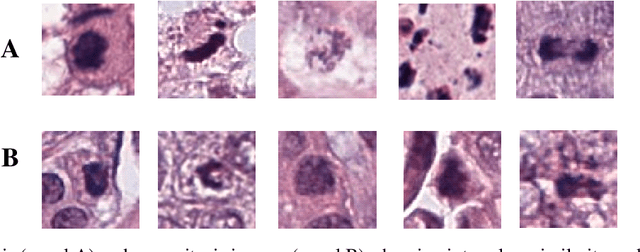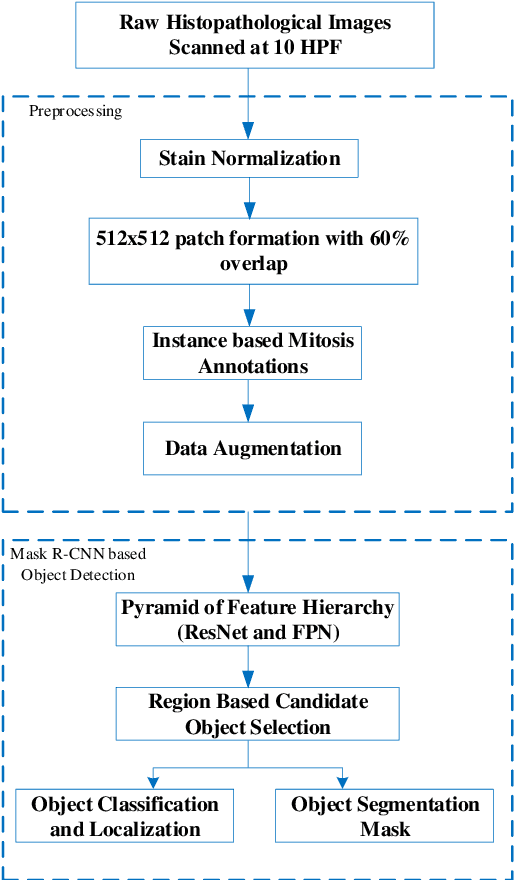Aneela Zameer
Deep Object Detection based Mitosis Analysis in Breast Cancer Histopathological Images
Mar 17, 2020



Abstract:Empirical evaluation of breast tissue biopsies for mitotic nuclei detection is considered an important prognostic biomarker in tumor grading and cancer progression. However, automated mitotic nuclei detection poses several challenges because of the unavailability of pixel-level annotations, different morphological configurations of mitotic nuclei, their sparse representation, and close resemblance with non-mitotic nuclei. These challenges undermine the precision of the automated detection model and thus make detection difficult in a single phase. This work proposes an end-to-end detection system for mitotic nuclei identification in breast cancer histopathological images. Deep object detection-based Mask R-CNN is adapted for mitotic nuclei detection that initially selects the candidate mitotic region with maximum recall. However, in the second phase, these candidate regions are refined by multi-object loss function to improve the precision. The performance of the proposed detection model shows improved discrimination ability (F-score of 0.86) for mitotic nuclei with significant precision (0.86) as compared to the two-stage detection models (F-score of 0.701) on TUPAC16 dataset. Promising results suggest that the deep object detection-based model has the potential to learn the characteristic features of mitotic nuclei from weakly annotated data and suggests that it can be adapted for the identification of other nuclear bodies in histopathological images.
Deep Belief Networks Based Feature Generation and Regression for Predicting Wind Power
Jul 31, 2018



Abstract:Wind energy forecasting helps to manage power production, and hence, reduces energy cost. Deep Neural Networks (DNN) mimics hierarchical learning in the human brain and thus possesses hierarchical, distributed, and multi-task learning capabilities. Based on aforementioned characteristics, we report Deep Belief Network (DBN) based forecast engine for wind power prediction because of its good generalization and unsupervised pre-training attributes. The proposed DBN-WP forecast engine, which exhibits stochastic feature generation capabilities and is composed of multiple Restricted Boltzmann Machines, generates suitable features for wind power prediction using atmospheric properties as input. DBN-WP, due to its unsupervised pre-training of RBM layers and generalization capabilities, is able to learn the fluctuations in the meteorological properties and thus is able to perform effective mapping of the wind power. In the deep network, a regression layer is appended at the end to predict sort-term wind power. It is experimentally shown that the deep learning and unsupervised pre-training capabilities of DBN based model has comparable and in some cases better results than hybrid and complex learning techniques proposed for wind power prediction. The proposed prediction system based on DBN, achieves mean values of RMSE, MAE and SDE as 0.124, 0.083 and 0.122, respectively. Statistical analysis of several independent executions of the proposed DBN-WP wind power prediction system demonstrates the stability of the system. The proposed DBN-WP architecture is easy to implement and offers generalization as regards the change in location of the wind farm is concerned.
 Add to Chrome
Add to Chrome Add to Firefox
Add to Firefox Add to Edge
Add to Edge